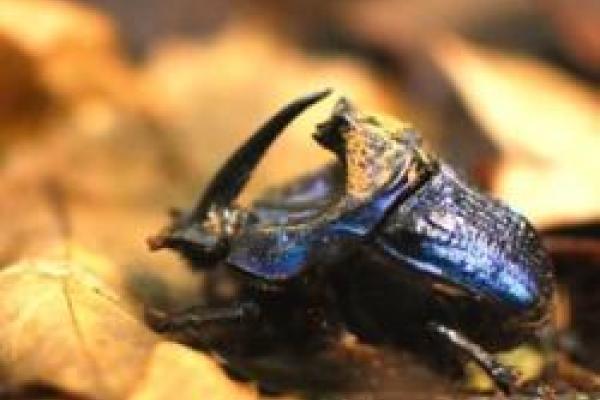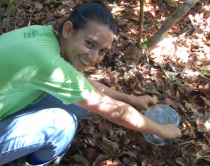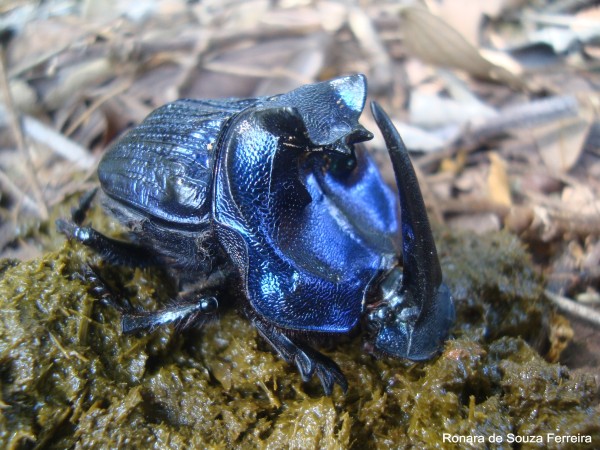Dung beetles as indicators of tropical forest restoration success: Is it possible to recover species and functional diversity?

Livia Audino is a PhD student based in the Department of Entomology at the Federal University of Lavras, Brazil. The university has a sandwich program, financed by the Brazilian government (scholarship program CAPES - PDSE), and she visited Dr Liza Comita in EEOB for several months in 2013 to work on her data. The paper was recently published in Biological Conservation.
Why did you decide to come to EEOB at Ohio State?
I decided to apply for a sandwich PhD program to improve the quality of my publications, seek assistance with theoretical and statistical questions, exchange ideas to develop innovative ecological studies and, of course, to practice English. I chose The Ohio State University because it is internationally recognized for academic excellence in the ecology field. This would enable me to strengthen partnerships with other important ecological research groups and expose my PhD thesis ideas to greater scrutiny. However, I also mainly wanted to work with Dr. Liza Comita, who's scientific research is recognized worldwide as a benchmark of quality. Besides, working in partnership with her would add a lot to my PhD thesis, because her research interests matches with the research I am developing. This collaboration is being extremely productive and important for my academic, professional and personal growth.

What problem did you address in your paper?
Tropical forest restoration is similar to an extremely hard puzzle, where it is necessary to fit together the thousands of dynamic pieces that comprise this complex system. While not being an easy task, restoration has been considered one of the major strategies to mitigate the ongoing biodiversity crisis and maintain ecosystem integrity. Improvement of restoration practices depends on studies that assess its efficacy examining multiple aspects of recovery, monitoring not only plants, but also the return of fauna and functions associated with biodiversity. So, our work evaluated the success of restoring tropical forest in areas of degraded pastures using dung beetles as indicators.
Why dung beetles?

Dung beetles can be considered an important indicator of environmental quality, since they depend on other groups of organisms for food resources, are sensitive to ecosystem change and provide a set of ecological functions to terrestrial ecosystems. We evaluated species diversity, composition and functional diversity (the diversity of traits responsible for determining ecosystem function) of dung beetle communities along a range of restored forests of different ages (a chronosequence), and also compared restoration areas with reference (primary and old secondary forest) and degraded (pasture) ecosystems.
What did you find?
We found that restored areas have the capacity to host forest-restricted species. However, species diversity and functional diversity are severely impoverished in the restored sites, and even after 18 years remain the same or worse in relation to the pasture. Our results are an indication that a forest full of trees does not necessarily represent that all is well and it might be an empty forest in relation to diversity of faunal organisms and ecosystem functions.
References
Livia D. Audino, J. Louzada, & Liza S. Comita. 2014. Dung beetles as indicators of tropical forest restoration success: Is it possible to recover species and functional diversity? Biological Conservation 169: 248-257. doi: 10.1016/j.biocon.2013.11.023
Image credits: Ronara Ferreira, Hannah Griffiths
